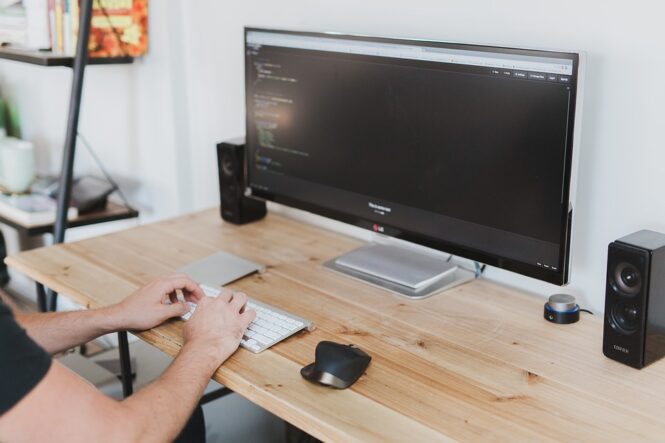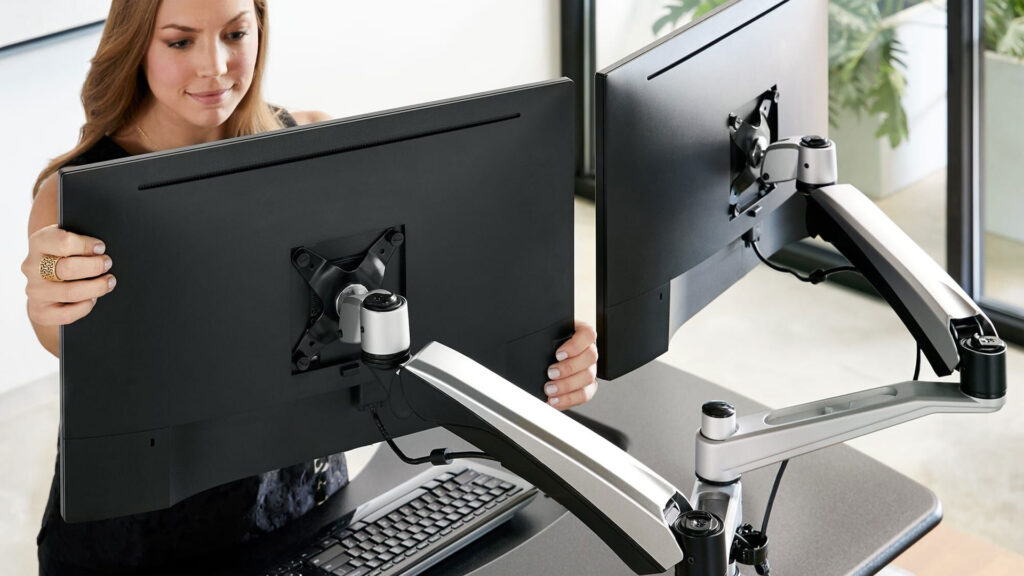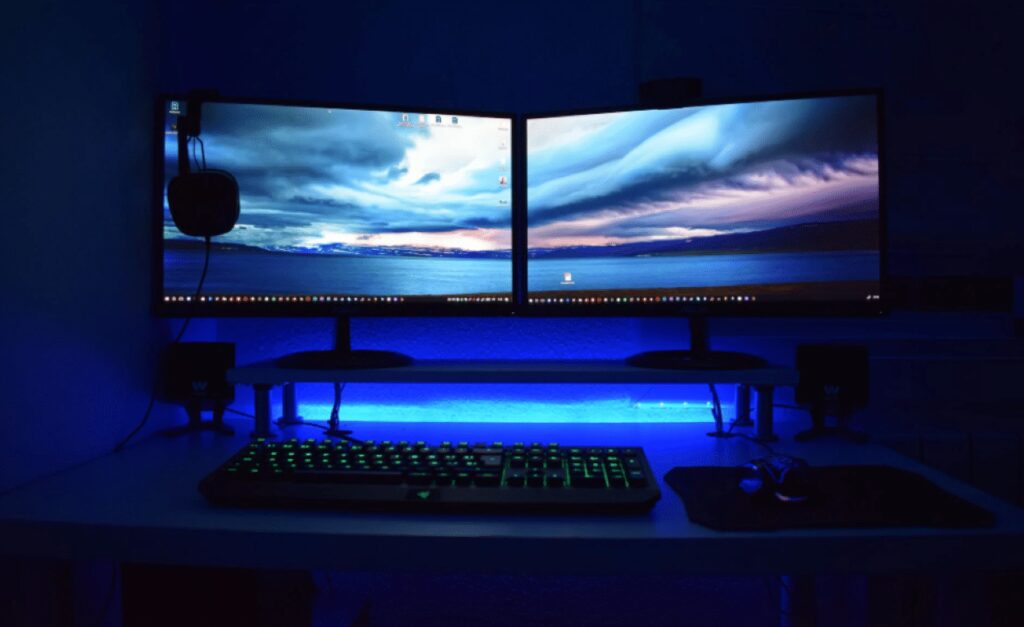If you’re a programmer by profession, you already know that most of your waking life would be spent in front of a laptop or desktop computer. You even probably love every minute of it.
But what many programmers and other people whose careers require extended periods in front of the computer don’t love is how the job ultimately affects their eyes.
But did you know that this doesn’t have to be the case? This post discusses what factors to consider when buying a monitor if you’re worried about your vision and tips to help keep your eyes healthy while working on the job.
Aspect ratio and monitor size should be considered together

People with reduced vision usually go with the biggest monitors they could afford. While this move does seem like the right choice, you shouldn’t just be considering the monitor size alone.
Instead, when you’re comparing between monitors based on screen size, you should also take into consideration its aspect ratio. The aspect ratio of a monitor is a proportional representation of the monitor’s width and height, so you’d encounter aspect ratios with 16:9, 21:9, etc.
People with difficulty seeing would benefit from monitors with better reading distances, allowing you to see the entirety of the screen without the need to move your head or neck dramatically.
This means a monitor with a traditional 4:3 or 5:4 aspect ratio may still be better for you than just going with the fanciest widescreen or ultra-widescreen displays in the market.
Adjust brightness and contrast
All monitors allow users to control brightness and contrast. Graphic designers usually adjust this regularly to be able to use accurate colors for their work. Because programmers use text and code (instead of images), they often forget about controlling these settings and in turn, suffer from eye strain regularly.
If you’re suffering from eye strain, increase contrast (set it around 60 to 70%). This adjustment should let you read the text more vividly as it stands out from its background. Once the contrast is set up, adjust the brightness high enough so that light slightly comes out of your screen.
Adjust color temperature

Aside from brightness and control, also play around with the monitor’s color temperature. If you don’t know this yet, the millions of spectral compositions of light color affect the level of glare you can see.
If you adjust the temperature, you’d be able to reduce glare and solve your eye strain as well.
Look out for anti-reflection technology
Anti-reflection or anti-glare technology uses a layer of coating to reflect light, allowing you to use it in bright light settings.
If you are prone to work late nights and rely mostly on a work lamp on your desk, make sure that the monitor you’re working on is equipped with anti-glare tech so you wouldn’t intentionally be hurting your eyes.
Buy a swivel for your monitor

It is ideal that your eyes are looking slightly downward when viewing the middle of your monitor. As such, you should adjust the monitor height so that the top of the screen is at eye level, or at least slightly below eye level.
Experts recommend the position of your monitor to be at least 20 inches from your eyes – that’s about an arm’s length distance. If this isn’t possible, invest in a swivel arm (that meets VESA standards), splurge on one. Sometimes, the viewing angle causes eye strain. Being able to move the monitor at eye level and angles that won’t make your eyes suffer can be the solution you didn’t know you needed.
Consider monitor resolution
For people without vision problems, monitor resolution is one of the priority considerations. But if you’re worried about your eyesight and want to prevent eye problems, you need to be very careful in choosing your display.
This is because higher resolutions lead to smaller image display, which means it can be hard for you to recognize images without scaling. This doesn’t mean you’d just go with lower resolutions either. A good balance (for example a 27-inch monitor or bigger with a WQHD or wide quad high definition resolution provides small but super-packed pixels that lead to clearer images.
Look out for VA or IPS monitors

OLED is the best option if you’re after picture quality. Unfortunately, OLED displays also have low-viewing angles, which means when you view the display from the side of your monitor, the colors would appear to be inverted.
Generally, people with eye issues should pick monitors designed with IPS or VA technology. VA monitors are known for more contrast ratio, while IPS monitors offer more viewing angles. Any of these options would give you better contrast stability at all viewing angles, which is why if you’re down to choosing LCD types, choose from models in these two categories.
Get your eyes checked
Of course, if the eye strain continues to persist, maybe you really need to buy computer glasses (or the pair known as “blue light glasses”). This pair of glasses is designed to filter or block the blue light from your display, effectively relieving digital eye strain or a condition called computer vision syndrome.
If the blue light glasses do not work, it’s time to get your eyes checked and upgrade your prescription glasses. Or if you’re not yet wearing one, maybe it’s about time to fit a pair of glasses suitable to your eye prescription level.
Before you embark on a programming career and work long hours in front of your computer, study the layout of your workspace. Is the monitor looking down? Are you in close range to your screen? A simple change in position can greatly help improve your field of vision. External lighting can also ensure that your workstation is properly lit as you work.
I hope this post helped you in choosing the monitor designed for preventing eye strain. Click here if you’re ready to buy some of the best monitors for programming.
 Imagup General Magazine 2024
Imagup General Magazine 2024



